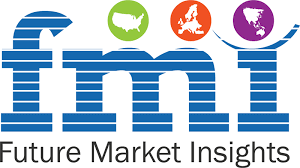The global mooring compensators market is worth US$ 1780 million as of now and is expected to reach US$ 2439 million by the year 2032 at a CAGR of 3.2% between 2022 and 2032.
Mooring equipment are usually produced from propylene rubber. It’s known for offering resistance against sunlight and ozone. Mooring compensators do help in increasing the life-span of mooring lines. They do lessen stress on cleats by absorbing unwanted tension.
Another advantage is that installing mooring compensators does not need any skillset. Mooring compensators are actually looked upon as a frugal solution to reduce the load on boat lines, thereby certifying them as vital boat accessories. This factor could increase the sales of mooring compensators in the years to come.
Mooring compensators are being made available in a plethora of dimensions. As such, the end-consumers could go for the customized size suiting their objective. The latest technologies are also being put into practice, so as to update the mooring compensators that exist, i.e. the ones made from metals. Firstly, they are at the risk of rusting. Secondly, they are reported to have noisy operations. Therefore, rubber-based mooring compensators are preferred. They offer enhanced resistance with longer life-span.
Mooring compensators could be varied as per altering number of times line gets wound around it. In other words, the mooring compensator could receive extension with number of turns getting increased. Additionally, extra fittings are not needed regarding mooring compensators. There are locking elements present at every end and vulcanized into compressor. These factors are slated to take the entire market for mooring compensators by storm in the near future.
Rubber-based mooring compensators do not witness corrosion. This renders longer life cycle. Rubber also has the property of dampening noise, as it’s lightweight.
At the same time, it needs to be noted that the manufacturing cost may increase going forward due to disruption in the supply chain in the wake of the ongoing Russia-Ukraine war. There have also been clashes between Azerbaijan and Armenia, which has caused dearth in availability of the raw materials. Future Market Insights has etched these findings with future perspectives in its latest market study entitled ‘Mooring Compensators Market’.
Key Takeaways from Mooring Compensators Market
- North America holds 28% of the market share, which could be reasoned with sizable population engaging in hordes of fun activities like fishing, boating, and likewise. Plus, safety rendered by the mooring compensators is unparalleled. This has reposed faith regarding mooring compensators amongst manufacturers.
- Europe holds 31% of the market share. This could be attributed to the region being aa hub of majority of boat manufacturing companies that use advanced machines, motors, and the other watercraft accessories. Metal-based compensators are not much to be seen as they are noisy. As such, rubber-based mooring compensators are expected to be the norm going forward.
Competitive Compensators
- Trelleborg, in September 2022, committed itself toward achievement of sustainability via designing tailor-made solutions.
- Unimer Marine, in November 2021, participated in METSTRADE Marine Equipment Tradeshow.
- Anchor Marine’s mooring compensator is meant for Ø 10-12 mm with EPDM rubber for boats upto 20 ft. (6 mm).
- Teijin Aramid’s products constitute high class aramid fibers that do offer superlative results and long lasting value.
“Growing interest in water-based recreational activities on the part of millennials to drive the mooring compensators market”, says an analyst from Future Market Insights.
How does the Report go about?
- Future Market Insights offers an exclusive perspective and various real-time insights on the mooring compensators market in its latest study, presenting historical demand assessment of 2016 – 2021 and projections for 2022 – 2032.
- The research study is based on material (rubber-based and polyurethane-based), by product type (U-Cleat mooring compensator, smart snubber mooring compensator, inline mooring compensator, classic mooring compensator, and likewise), and by mooring type (catenary, taut, semi taut, spread, single point, and dynamic positioning).
- As boat mooring solutions do curtail friction that boats experience while in motion, the mooring compensators market is bound to substantiate in the forecast period.
Key Segments in the Mooring Compensators Market
By Material:
- Rubber-baseded
- Polyurethane based
By Product Type:
- U-Cleat Mooring Compensator
- Smart Snubber Mooring Compensator
- Inline Mooring Compensator
- Classic Mooring Compensator
- Others
By Mooring Type:
- Catenary
- Taut
- Semi Taut
- Spread
- Single Point
- Dynamic Positioning
About Future Market Insights (FMI)
Future Market Insights (ESOMAR certified market research organization and a member of Greater New York Chamber of Commerce) provides in-depth insights into governing factors elevating the demand in the market. It discloses opportunities that will favor the market growth in various segments on the basis of Source, Application, Sales Channel and End Use over the next 10-years.
Contact Us :
Future Market Insights, Inc.
Christiana Corporate, 200 Continental Drive,
Suite 401, Newark, Delaware – 19713, USA
T: +1-347-918-3531
For Sales Enquiries: sales@futuremarketinsights.com
Browse All Reports: https://www.futuremarketinsights.com/reports





